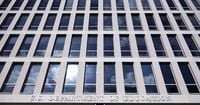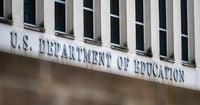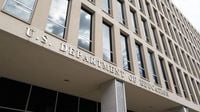Washington — The U.S. Department of Education announced on April 21, 2025, that it will restart collections on federal student loans in default starting May 5, effectively ending a pause that lasted over five years due to the COVID-19 pandemic. This decision will impact more than 5 million borrowers currently in default, with an additional 4 million potentially facing similar circumstances in the coming months.
Federal student loans enter default after 270 days without payment, and the Education Department's new initiative will involve the Treasury Department's offset program. This program allows the government to recover delinquent debts by withholding federal payments, including tax refunds, federal salaries, and Social Security benefits. Education Secretary Linda McMahon emphasized the necessity of this action, stating, "American taxpayers will no longer be forced to serve as collateral for irresponsible student loan policies."
The Biden administration had previously paused federal student loan payments during the pandemic, extending the initial moratorium initiated by former President Trump. The pause ended in October 2024, leaving many borrowers unprepared for the resumption of payments. As of now, less than 40% of borrowers are current on their student loan payments, suggesting a significant number of individuals may struggle to resume their financial obligations.
In the coming weeks, borrowers in default will receive emails detailing the next steps and urging them to explore repayment options. Notices regarding wage garnishment will follow later this summer, providing a further incentive for borrowers to engage with their repayment plans. The Education Department has made it clear that there will be no mass loan forgiveness, countering expectations some borrowers may have had.
Linda McMahon's statement also criticized the Biden administration's previous attempts at broad debt relief, asserting that the executive branch lacks the constitutional authority to unilaterally erase student loan debt. "The Biden Administration misled borrowers: the executive branch does not have the constitutional authority to wipe debt away, nor do the loan balances simply disappear," she remarked.
Under the previous administration, federal student loan collections were paused as part of a broader strategy to provide relief during economic uncertainty. However, as the Trump administration begins to dismantle the Education Department, the focus is shifting towards ensuring that borrowers adhere to their repayment obligations. President Trump recently signed an executive order directing McMahon to initiate the process of shutting down the department, with plans for the Small Business Administration to absorb its vast student loan portfolio, which amounts to approximately $1.8 trillion.
As part of the new collection efforts, the Education Department's Office of Student Aid will restart the Treasury Offset Program and is urging defaulted borrowers to contact the Default Resolution Group. The department encourages borrowers to make monthly payments, enroll in income-driven repayment plans, or sign up for loan rehabilitation programs to avoid the negative impacts of default.
Despite these efforts, concerns have been raised regarding the lack of accessible repayment options. The Education Department recently removed applications for all income-driven repayment plans from its website, which has drawn criticism from advocacy groups. The Student Borrower Protection Center, an organization that advocates for student borrowers, has condemned the Trump administration's decision to lift the pause on involuntary collections without providing adequate alternatives for borrowers struggling to pay their loans.
In response to these challenges, the Education Department has announced plans to introduce a new enhanced income-driven repayment process. This new system aims to simplify the process for borrowers by eliminating the need to recertify their income annually. The previous Saving on a Valuable Education (SAVE) plan, introduced in 2023, allowed borrowers to cap their monthly payments at 5% of their income, significantly reducing the financial burden on borrowers. However, this plan faced legal challenges and has been complicated by recent court rulings.
As the Education Department prepares to resume collections, it is also planning a robust communication strategy to keep borrowers informed about their options. Department officials stated they will send a series of emails to defaulted borrowers, providing guidance on available repayment programs and tools. An artificial intelligence assistant has also been made available to help borrowers navigate their repayment options.
With the impending restart of collections, many borrowers are left grappling with the financial implications of default, and advocacy groups are calling for more comprehensive solutions to address the student loan crisis. As the landscape of federal student loan policy continues to evolve, the impact on millions of borrowers remains to be seen.
The Education Department's announcement marks a significant shift in federal student loan policy, one that will likely shape the financial futures of millions of Americans. As borrowers prepare to face the realities of repayment, the administration's actions will be closely scrutinized by both advocates and critics alike.








